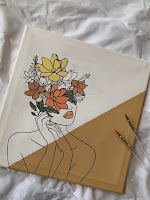The Power of Art Education: Nurturing Cognitive Development, Fostering Creativity, and Cultivating Critical Thinking
Title: The Power of Art Education: Nurturing Cognitive Development, Fostering Creativity, and Cultivating Critical Thinking
Art has long been recognized as a fundamental aspect of human expression and creativity. Beyond its aesthetic appeal, art education plays a vital role in shaping the minds of learners and fostering holistic development. From cognitive growth to enhanced problem-solving abilities, art education offers a myriad of benefits for students of all ages. In this blog post, we delve into the importance of art education and explore its profound impact on cognitive development, creativity, and critical thinking. Join us as we delve into teaching resources, strategies, and innovative approaches that empower educators to harness the full potential of art instruction.
#ArtEducation #CognitiveDevelopment #Creativity #CriticalThinking
1. Cognitive Development:
Art education serves as a catalyst for cognitive development by stimulating various cognitive processes. Through artistic endeavours, students engage in observation, interpretation, and analysis, sharpening their observational skills and attention to detail. Moreover, creating art activates memory, spatial reasoning, and problem-solving abilities, nurturing cognitive growth. Resources such as art history books, museum visits, and digital platforms offer a treasure trove of information to introduce students to diverse art forms and historical periods.
2. Unleashing Creativity:
Art education provides a safe and supportive environment for students to explore their creativity. It encourages self-expression, imagination, and originality, fostering a sense of personal identity and confidence. Teachers can incorporate open-ended projects, collaborative activities, and experimentation with different mediums to unleash the full creative potential of their students. Sharing online resources, such as virtual art galleries and online art communities, widens students' exposure to diverse artistic styles and perspectives.
3. Cultivating Critical Thinking:
Art education cultivates critical thinking skills by encouraging students to analyze, interpret, and evaluate visual information. Students learn to deconstruct artworks, discern artistic choices, and develop their own perspectives. Incorporating art critique sessions and discussions in the classroom allows students to express their opinions, strengthen their reasoning abilities, and appreciate multiple viewpoints. Utilizing technology, teachers can facilitate virtual art debates or utilize online platforms for interactive discussions, enhancing critical thinking engagement.
4. Teaching Strategies:
To maximize the impact of art education, educators can adopt various teaching strategies. Project-based learning, where students create comprehensive artworks with a defined goal, promotes collaboration, problem-solving, and perseverance. Integrating art across different subjects, such as science, math, and literature, fosters interdisciplinary connections and strengthens students' understanding of complex concepts. Furthermore, incorporating multicultural art activities and exploring artists from diverse backgrounds promotes cultural awareness and empathy.
5. Innovative Approaches:
Incorporating innovative approaches in art instruction amplifies its transformative power. Augmented reality (AR) and virtual reality (VR) technologies provide immersive art experiences, allowing students to explore virtual galleries and interact with artworks. Digital art platforms and software enable students to experiment with digital mediums, fostering digital literacy and expanding creative horizons. Educators can also collaborate with local artists and organizations to bring real-world experiences and workshops into the classroom, inspiring students through firsthand encounters with art professionals.
Art education holds immense value in nurturing cognitive development, unlocking creativity, and cultivating critical thinking skills in students. By embracing teaching resources, strategies, and innovative approaches, educators can harness the full potential of art instruction. Let us continue to champion the importance of art education, empowering future generations to express themselves, think critically, and appreciate the beauty that surrounds us.
Remember, art has the power to shape minds and change lives!
#ArtEducationMatters #CognitiveGrowth #CreativeExpression #ThinkCritically




Comments
Post a Comment